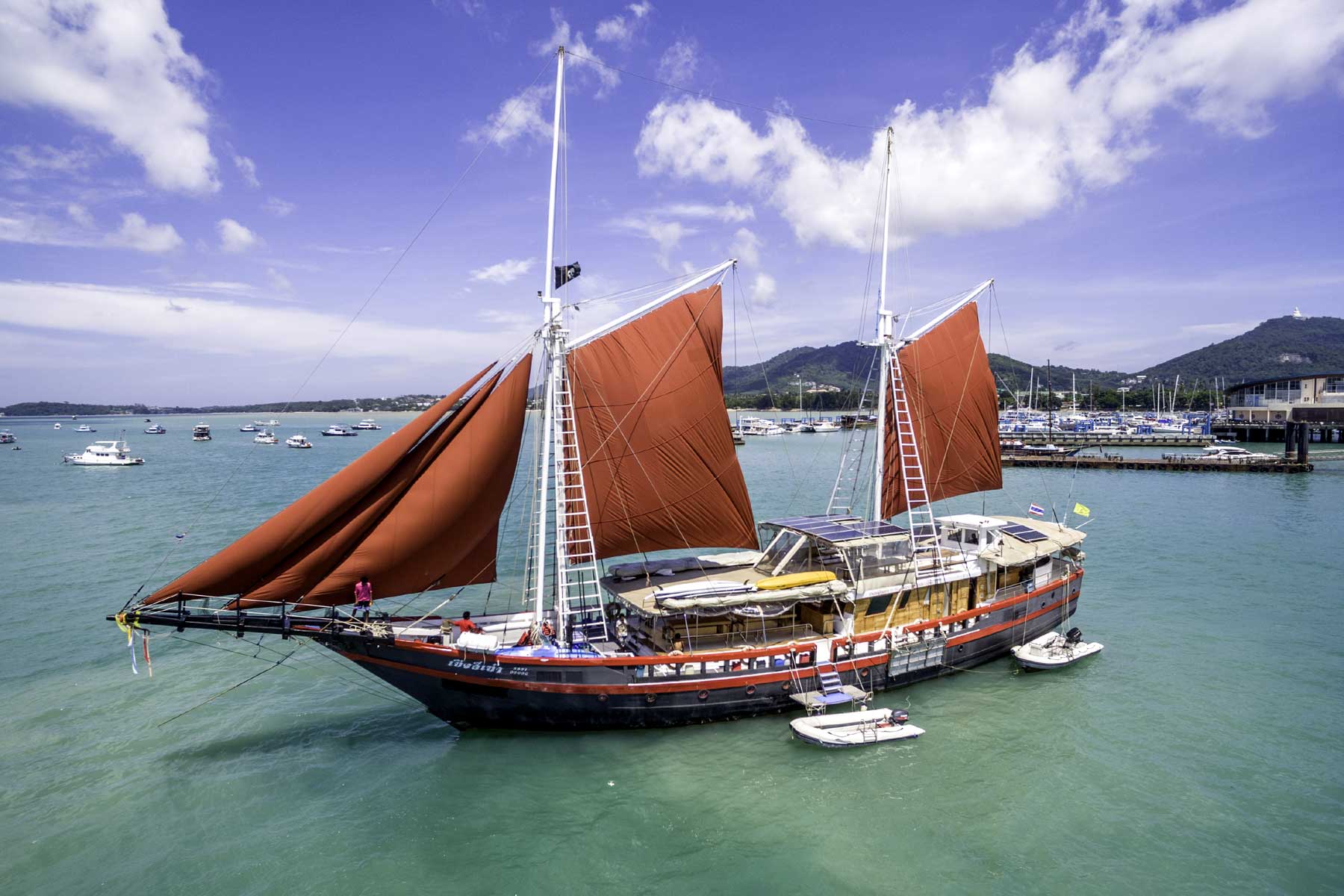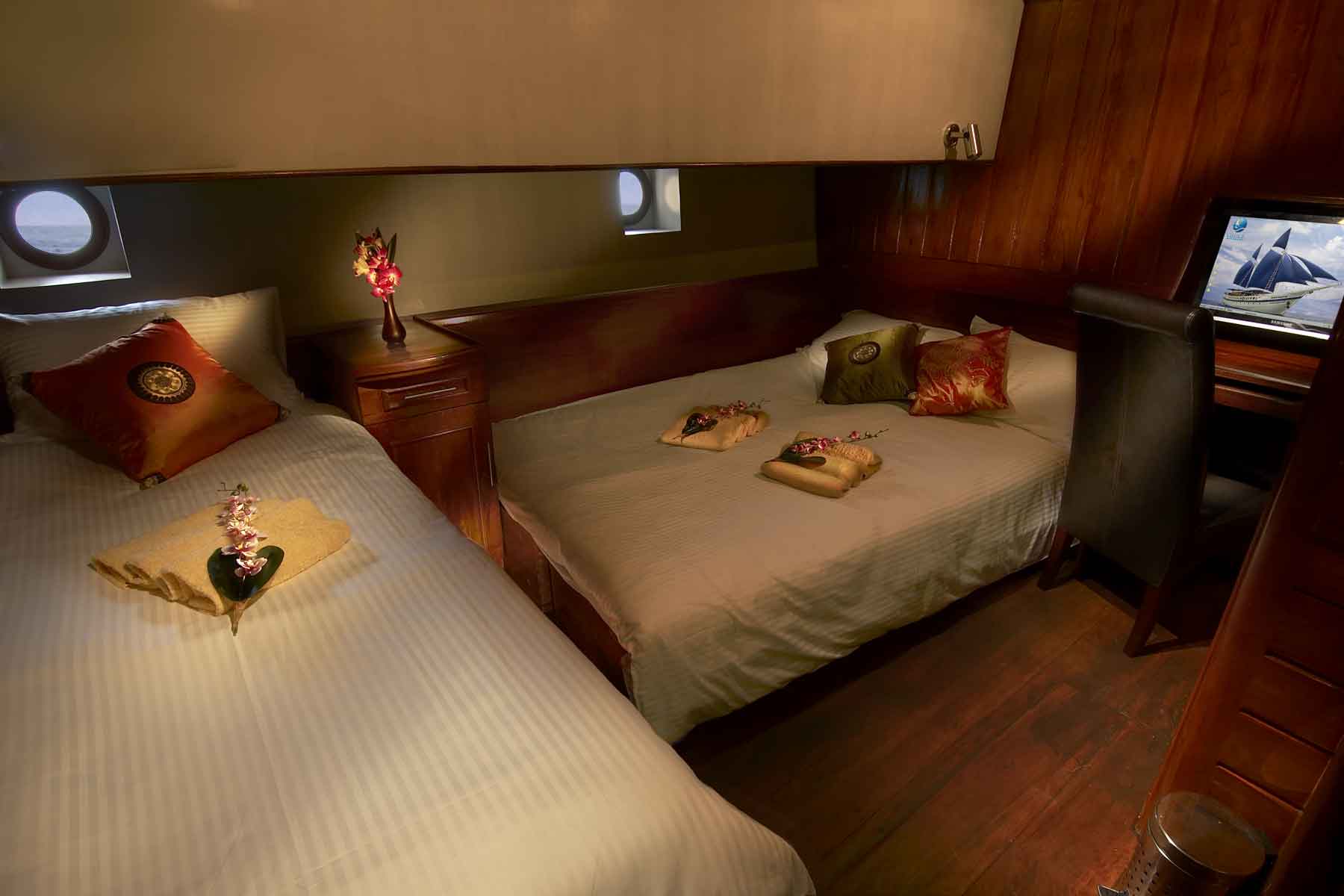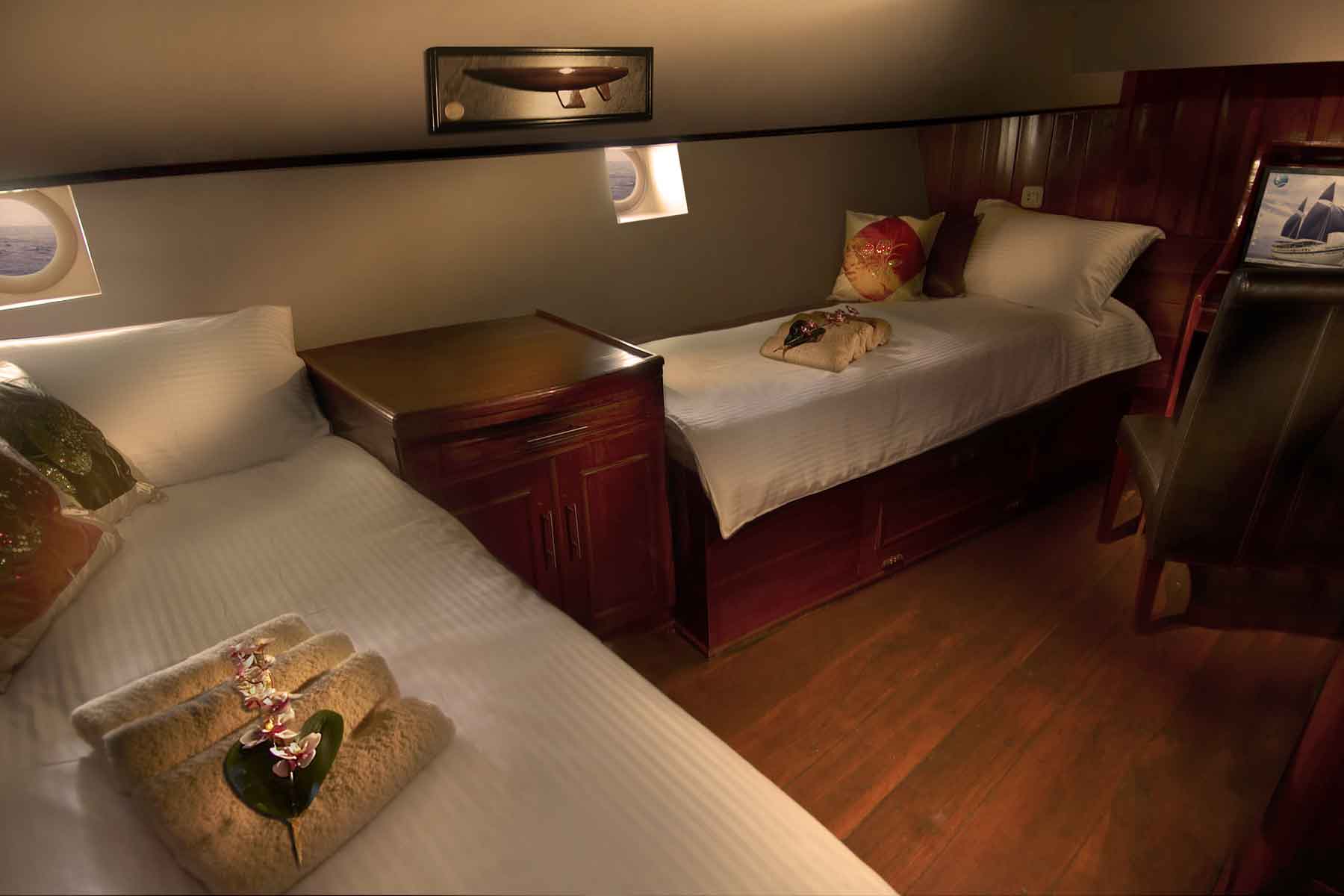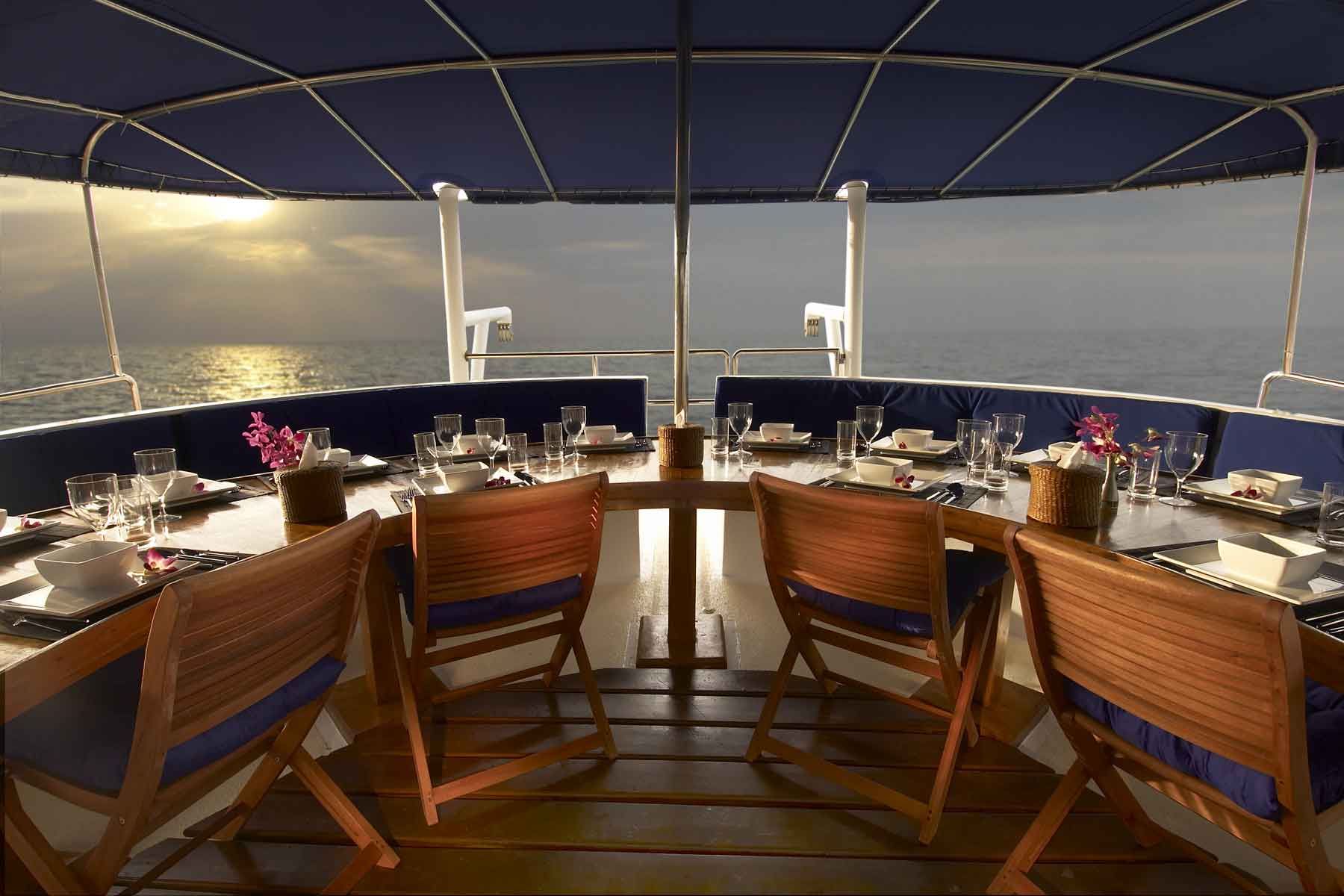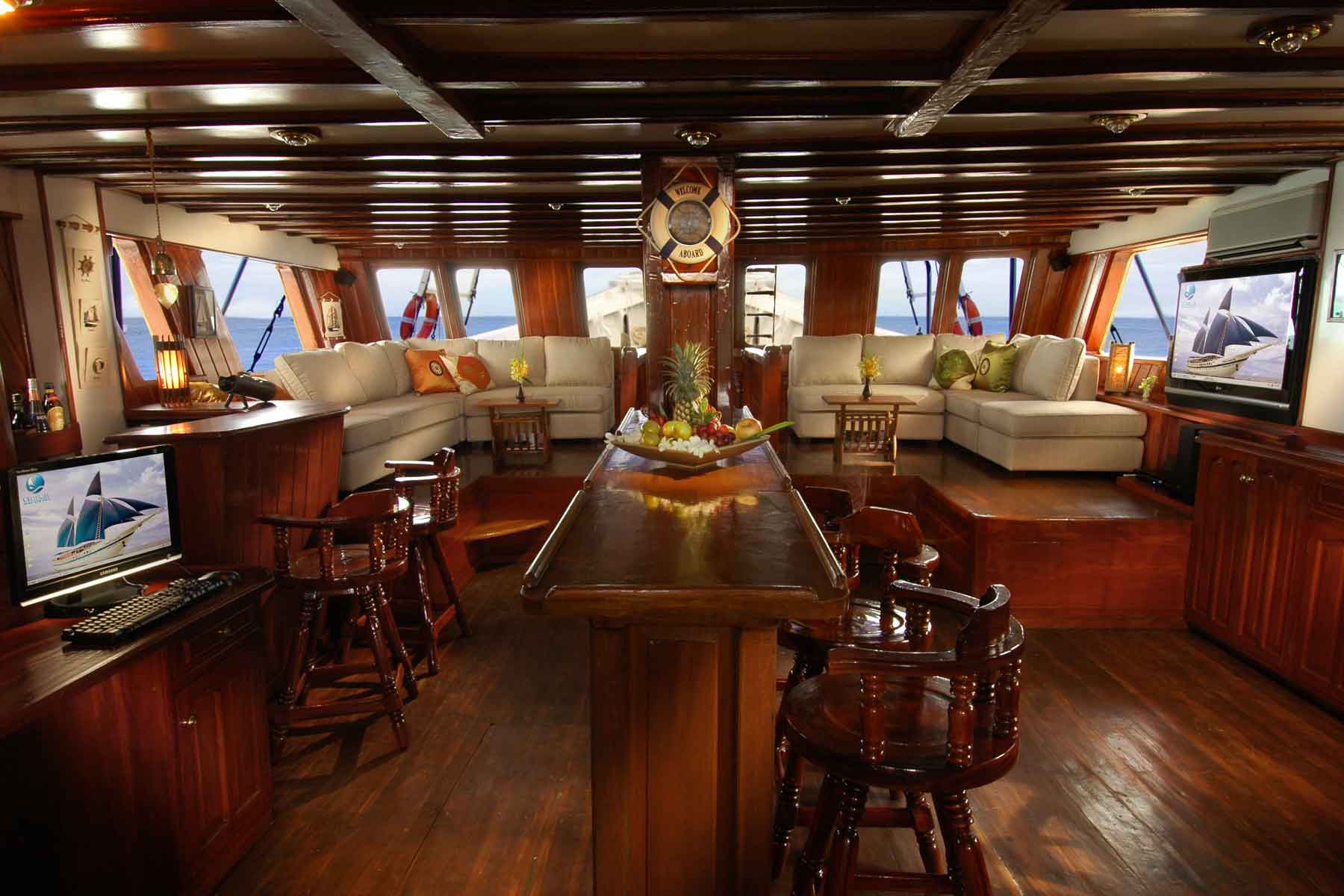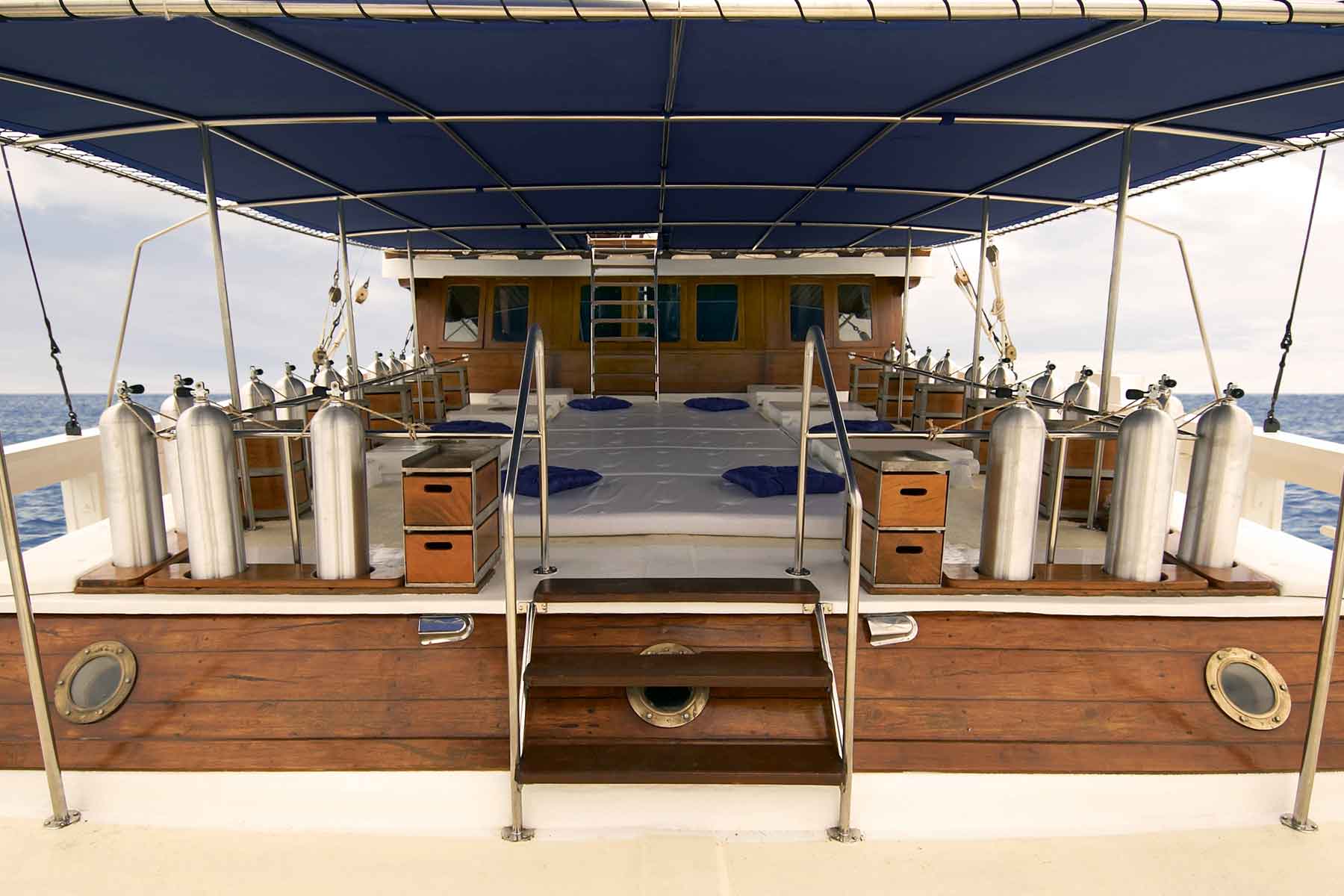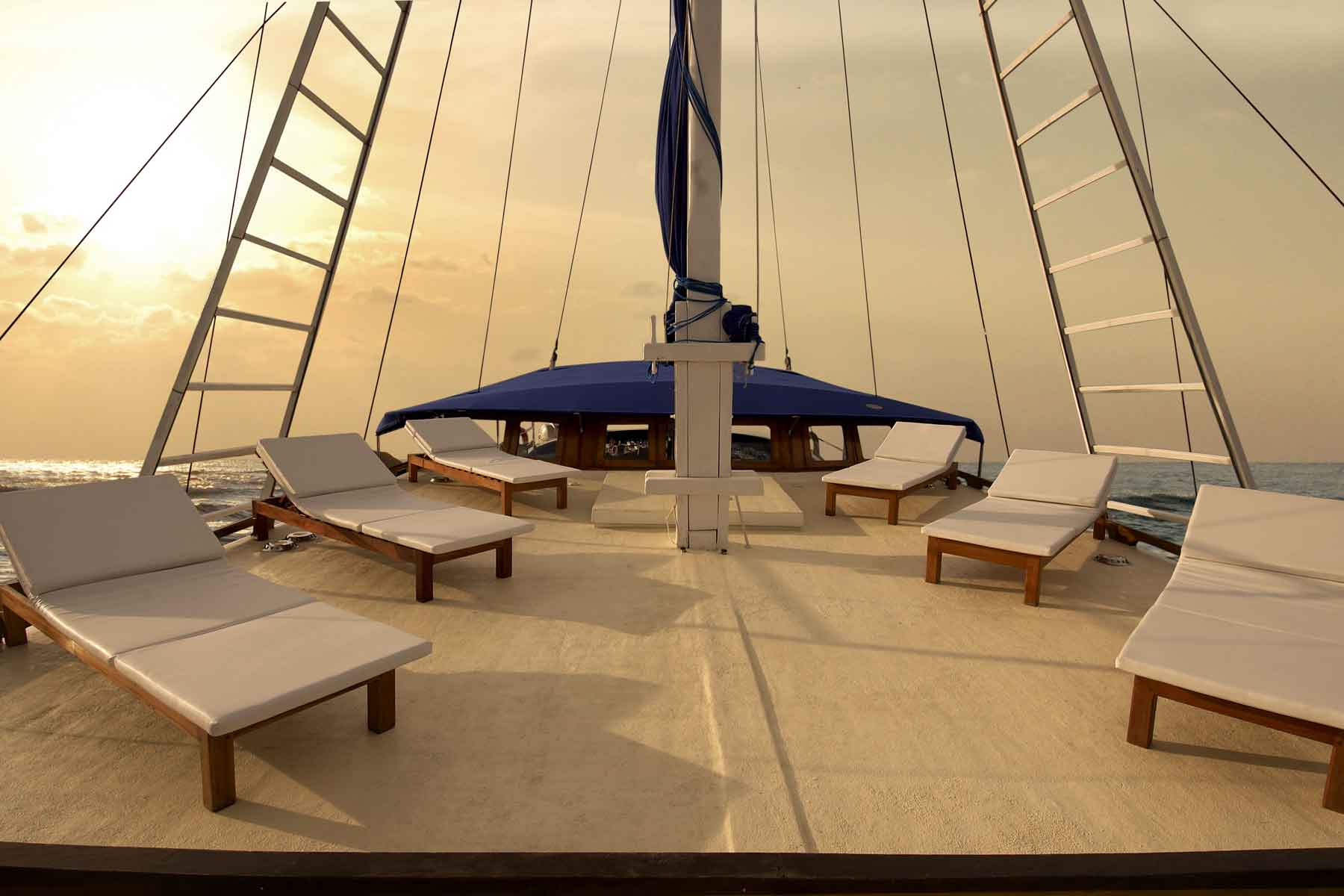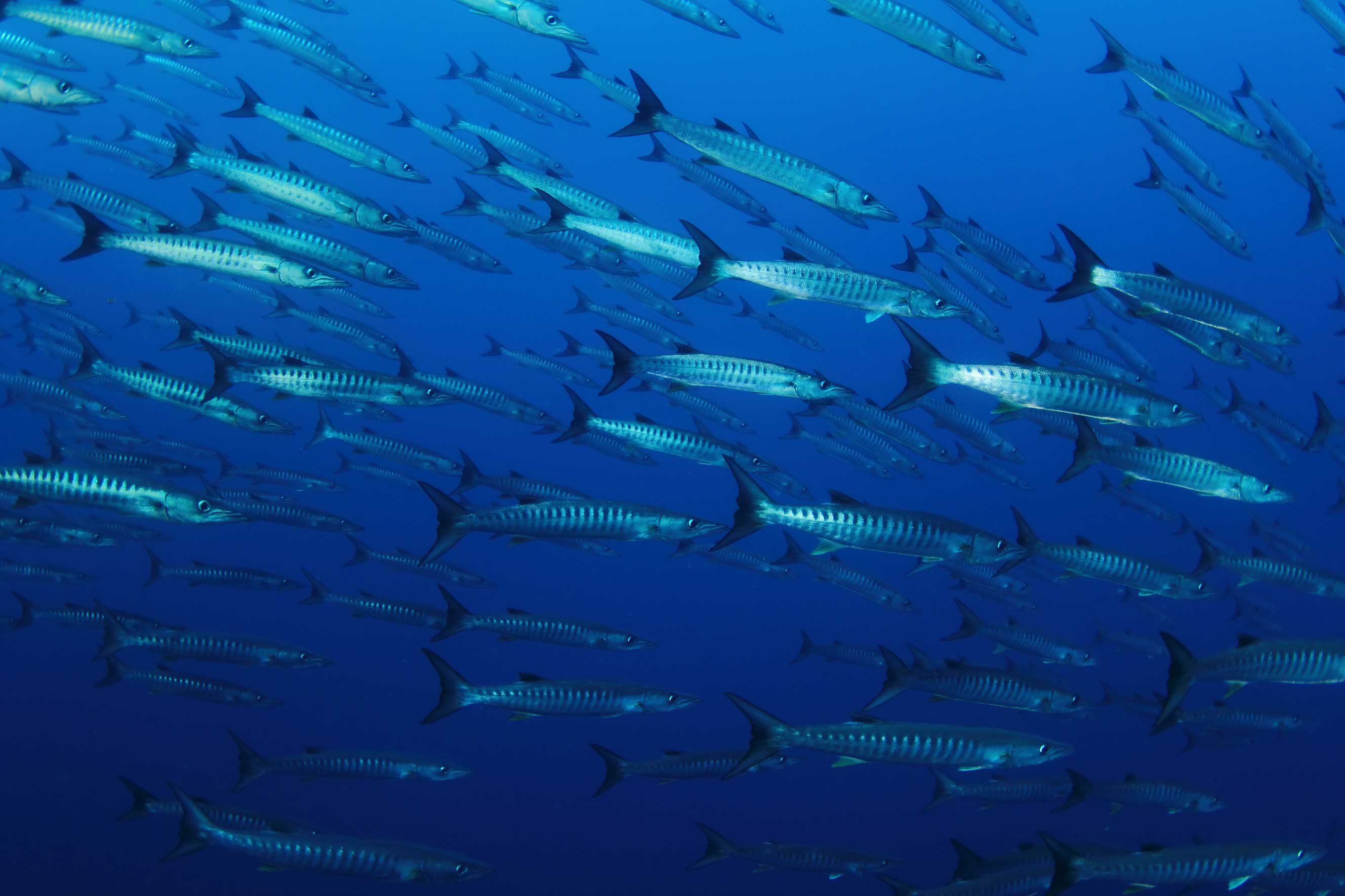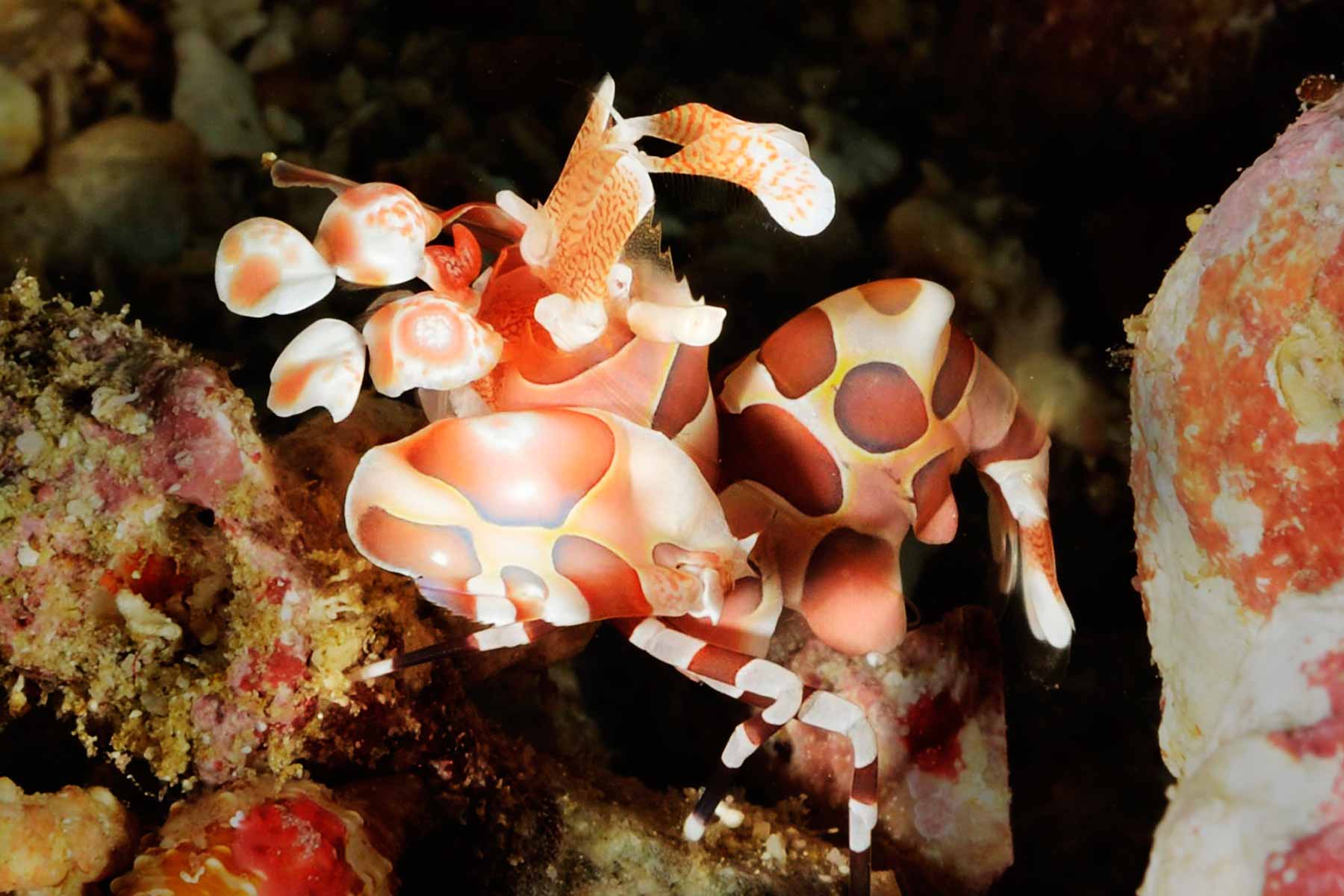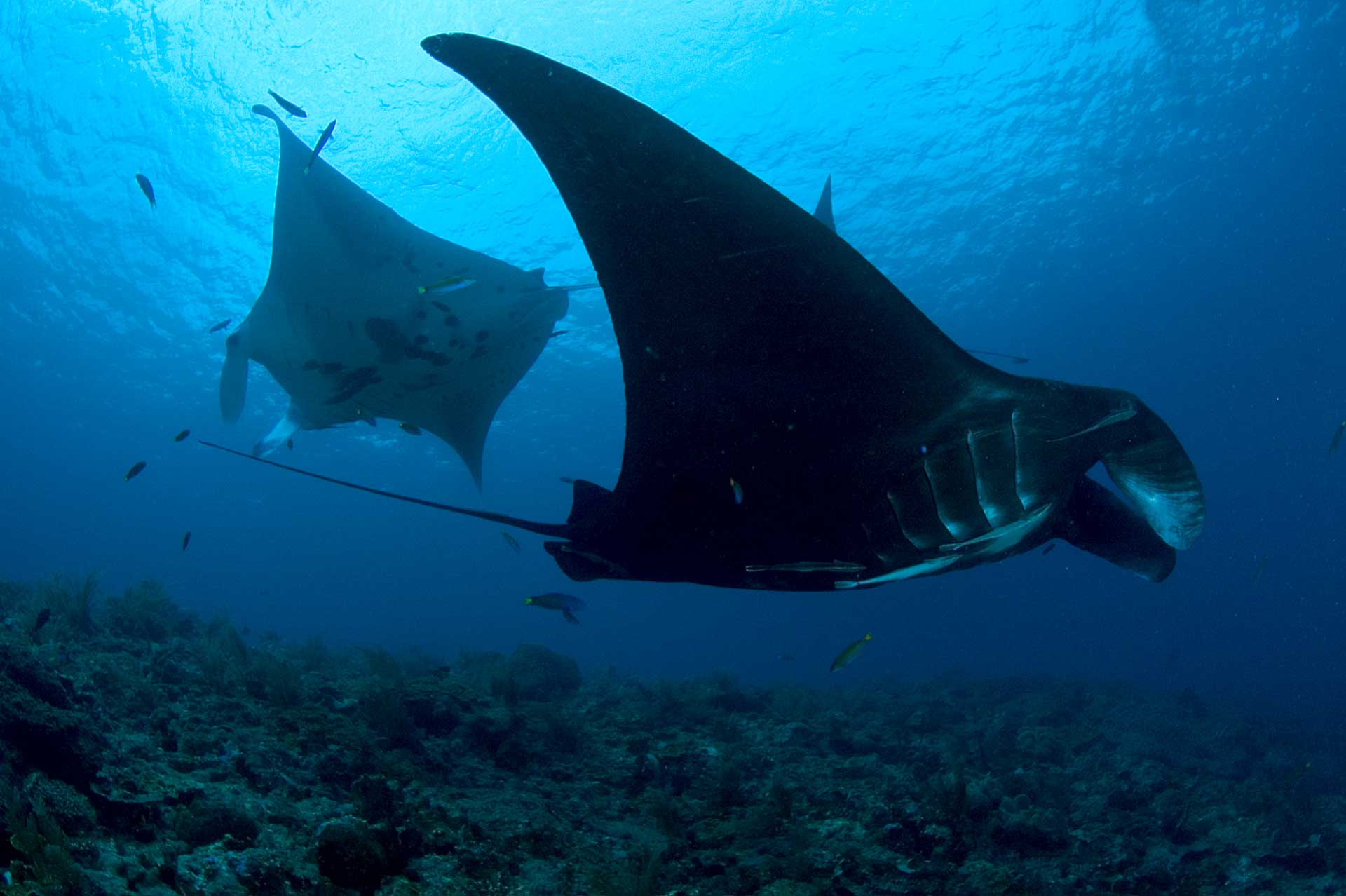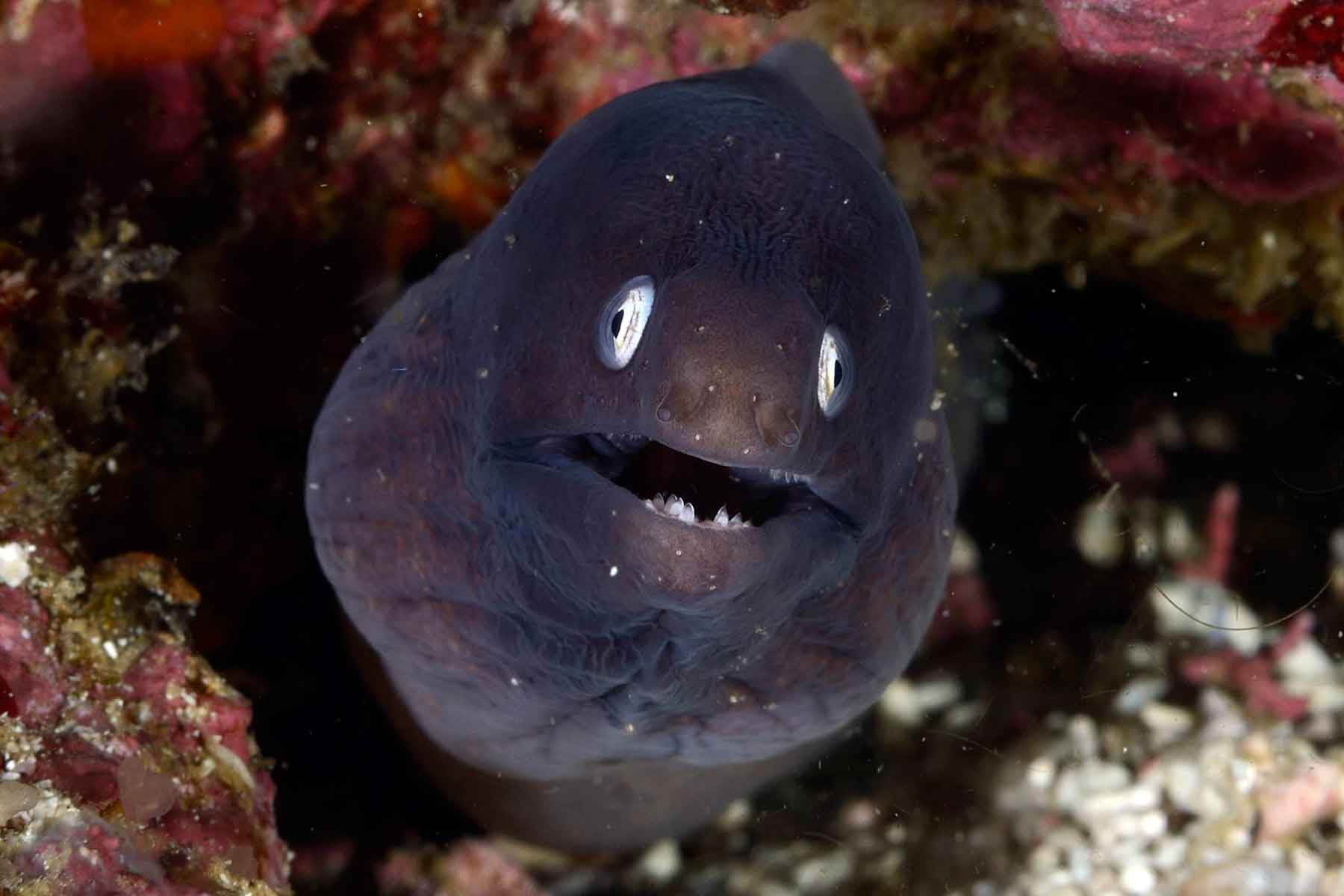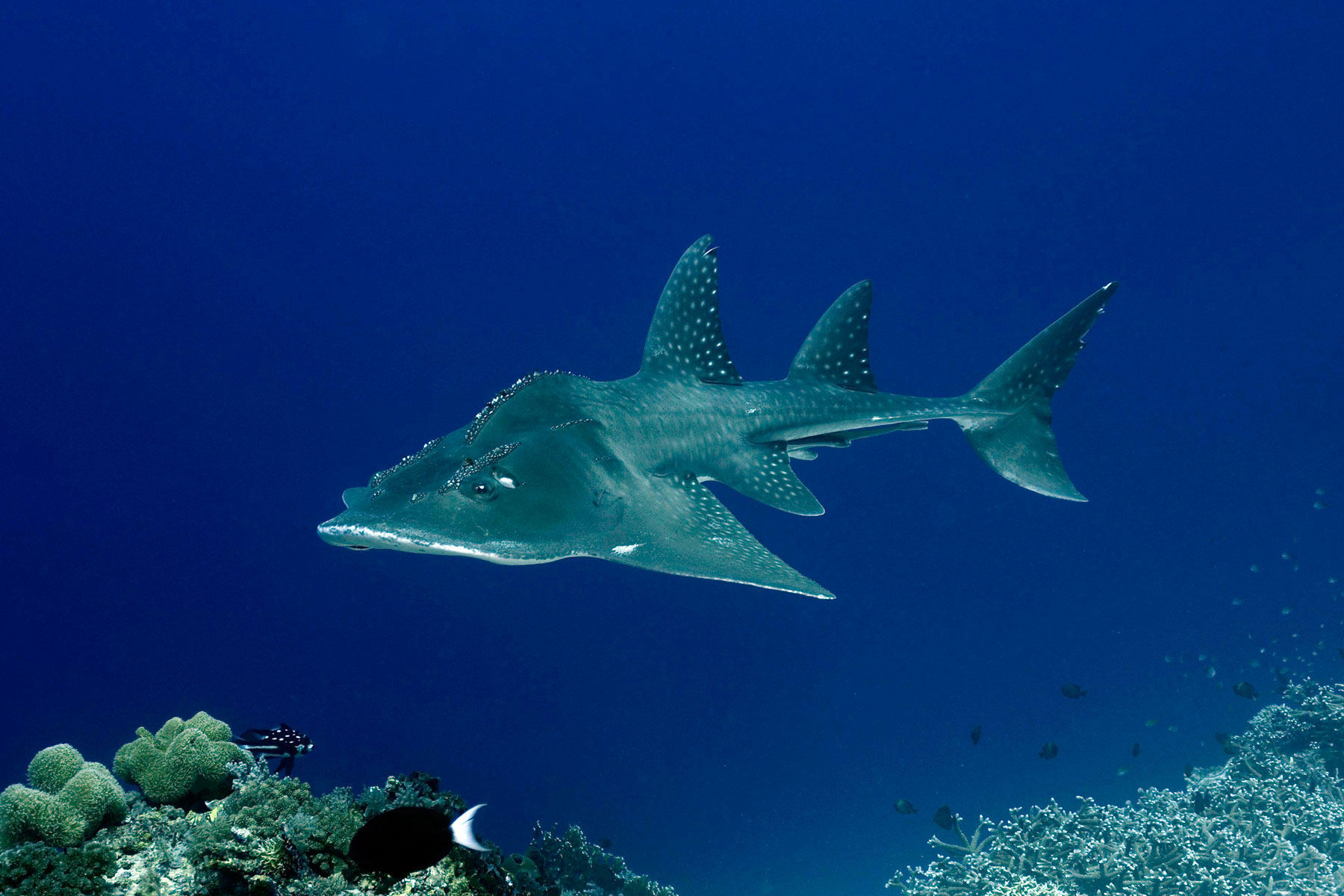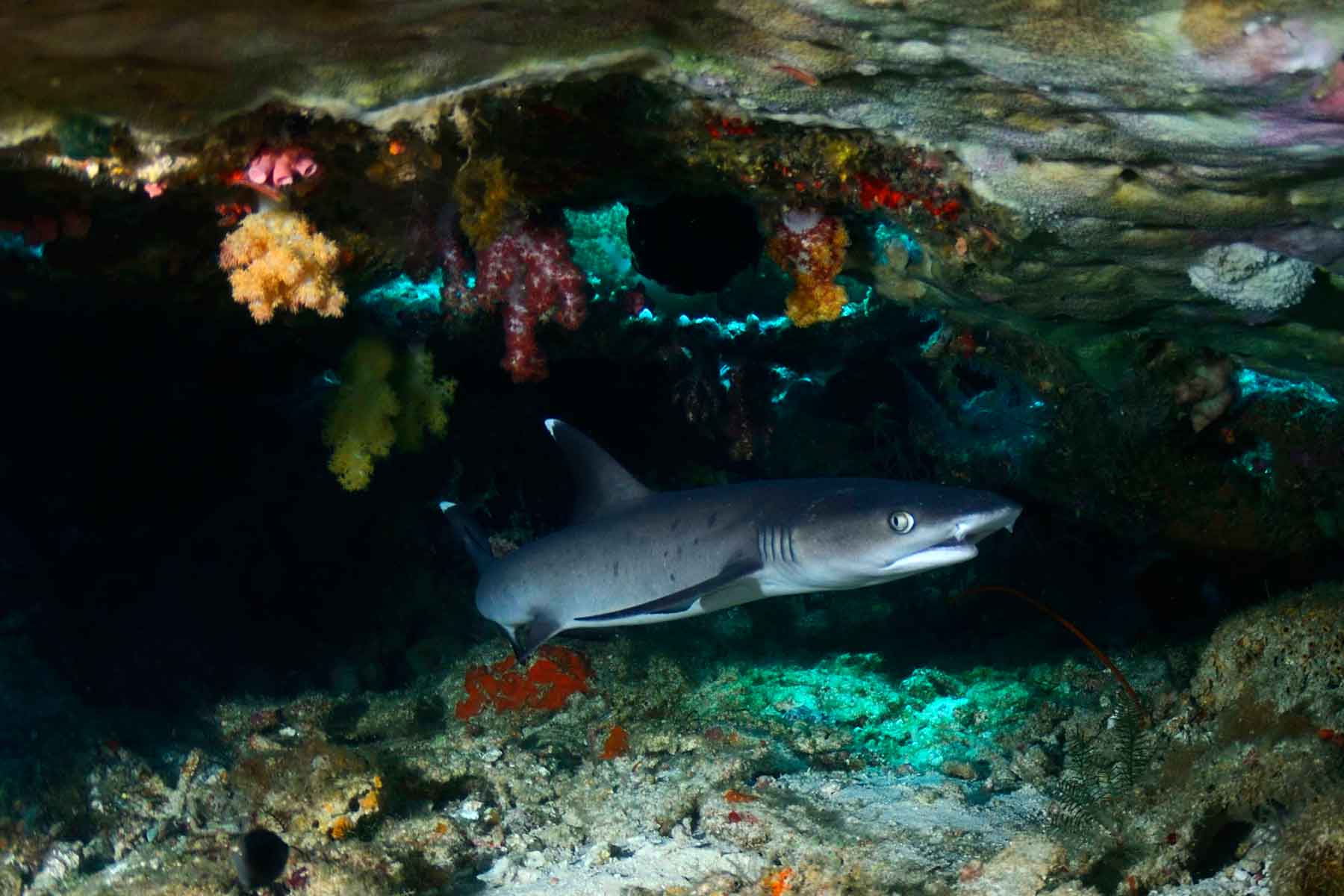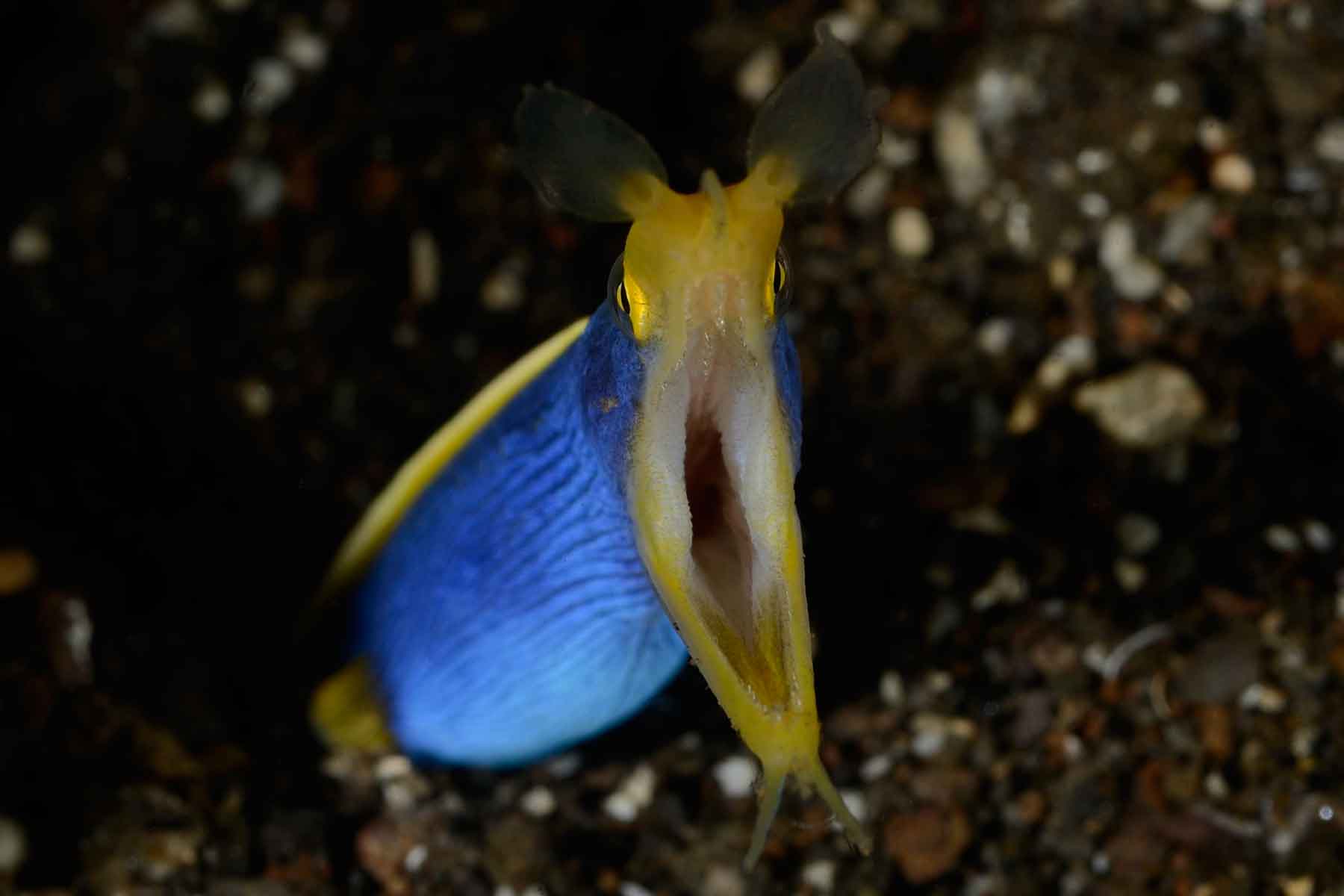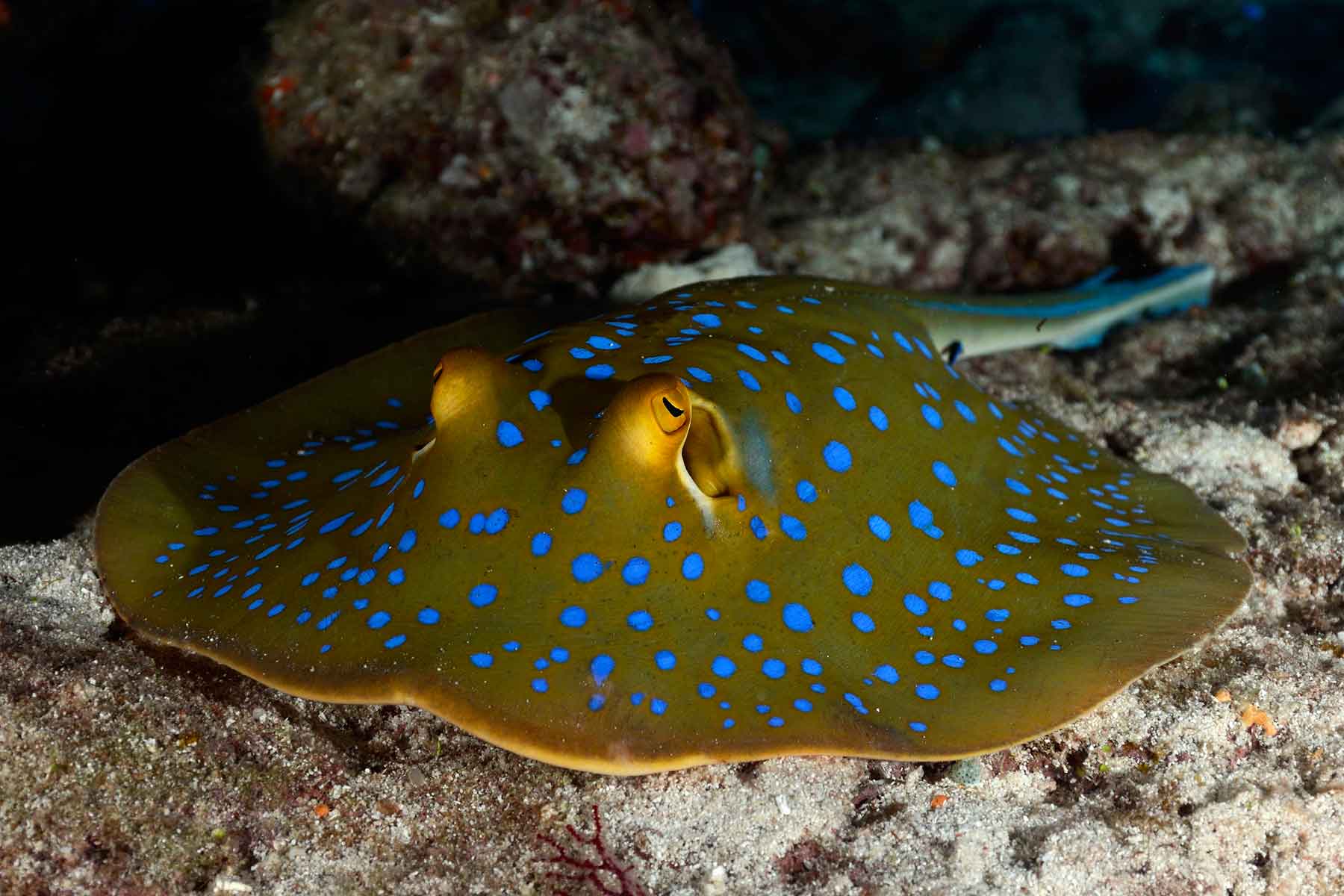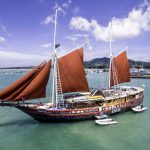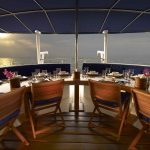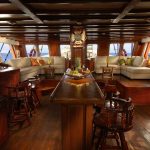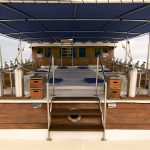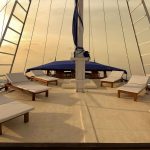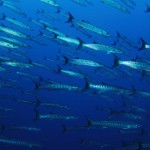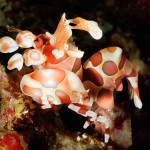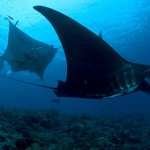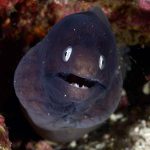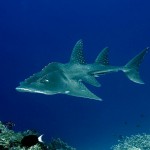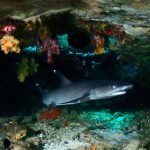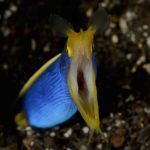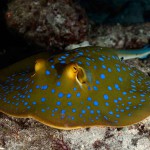The Phinisi, officially known as ‘Cheng I Sao’, offers liveaboard adventures in Thailand. The name Cheng I Sao comes from a legendary fearless female Chinese pirate who roamed the Andaman Sea. The Phinisi carries up to 18 guests in 7 cabins with ensuite bathrooms and individual aircon controls. She features an indoor salon with 42″ flatscreen TV, covered outdoor dining area, sundeck with sunbeds and a shaded dive deck where each diver has a personal set-up area. Nitrox and dive equipment rental are available on The Phinisi.
Best of Thailand 10 night itinerary
Join The Phinisi on this unique itinerary exploring the very best diving that Thailand has to offer, taking in the highlights of Hin Daeng, Hin Muang, Koh Haa, Koh Phi Phi, King Cruiser, the Similan Islands, Koh Bon, Koh Tachai, Richelieu Rock and the Surin Islands.
Similan Islands National Park
Sites on the east side of the Similan Islands tend to be sand covered fringing reefs predominantly made up of hard coral. The reef plateaus are around 5-10m deep with gentle slopes heading down to the reef edge at around 20-25m. Where present, currents on the eastward sites tend to be relatively gentle. The dive sites on the west side of the islands are a little different. Giant granite boulders tumble to the sea bed easily reaching depths of 40m. Being more exposed to the open ocean, these sites can be prone to strong and often unpredictable currents. The currents have kept the boulders free from a build up of sand, leading to dive sites consisting of a variety of canyons, tunnels, swim-throughs, archways and caverns. The diving can be challenging but the increased chance of larger pelagics makes up for that.
Surin Islands National Park
The topside scenery of Koh Surin, with evergreen forests, mangroves, and small beaches, surpasses even that of the picturesque Similan Islands. Underwater the reefs of the Surin Islands have some of the greatest hard coral diversity in Thailand.
Koh Phi Phi National Park
Located 45km to the east of Phuket, the Moo Koh Phi Phi Archipelago consists of 6 islands, the largest and only inhabited of which is Phi Phi Don. Above water scenery is dramatic with huge limestone cliffs and sheltered coves and bays with white sandy beaches. Many of the dive sites are walls with depths ranging between 10m and 25m, covered in coral bushes and sea fans.
King Cruiser
The King Cruiser was a car ferry that used to travel between Phi Phi and Phuket until, in 1997, ‘The Cruiser’ hit Anemone Reef on her crossing and sank a short distance away. No lives were lost, but divers were left with a great wreck dive! Although now largely broken up, she is covered with soft corals and hides some wonderful gems, as well as being home to several large schools of snapper.
Koh Haa National Park
With a name that translates as Five Islands, there are several dive sites around these amazing islands where you can explore pinnacles, walls, boulders, caverns, and swim-throughs to discover the varied marine life that have made these islands their home.
Hin Daeng & Hin Muang
These two pinnacles (translating directly as Red Rock and Purple Rock) reach down to over 70m in open ocean, and are best known for Manta Ray and Whale Shark encounters. Almost perpetual good visibility and dramatic topography combined with huge fish numbers make for excellent liveaboard diving.
Koh Bon
This is generally the most likely place to see Manta Rays on this itinerary. You are also likely to see napoleon wrasse, sweetlips, octopus, bluefin trevally, giant moray eels, great barracudas, fire dart goby, spiny lobster and nudibranchs of many types. The dive sites vary from wall diving to gently sloping reefs and from submerged boulders to coral gardens. Diving on the West Ridge can be an adrenaline filled drift, with amazing views, while the North Reef is a gentler experience over a hard coral garden.
Koh Tachai
This island is famous for its pinnacle dive site, known by many as Twin Peaks as well as more relaxed reef diving on the North Reef and South Reef. Normally, turtles, barracuda, pipefish, and nudibranchs can be found here. There is also a chance to see bigger species in this area like Manta Rays and Whale Sharks, especially from late January until April.
Richelieu Rock
This limestone pinnacle was named by Jacques Cousteau after Cardinal Richelieu due to the similarity to the colour of his gown as there are gorgeous purple dendronephthya soft corals covering most of the pinnacle. There are other areas covered in magnificent sea anemones as well. Barely breaking the surface at low tide, this horseshoe-shaped outcropping slopes steeply to a sandy bottom at 18m to 35m. This site offers great diversity for such a small and isolated spot. It also offers excellent multi-level diving and, because it’s a high-profile reef, there’s always sheltered areas to hide from current. The marine life is prolific and includes amongst, many other things; pharaoh cuttlefish, large octopi, all 5 varieties of anemone fish of the Andaman Sea, variety of moray eels, ornate ghost pipefish, smashing mantis shrimps, harlequin shrimps, tiger tail seahorses, spanish mackerel, frogfish, many schooling snapper and occasional sightings of Manta Rays and Whale Sharks.
Prices include: Cabin accommodation on The Phinisi, up to 4 dives per day (inc night dive), tanks/weights/weight belts, all meals, fresh coffee, tea, soft drinks and juices, and return transfers between local airport and the vessel on the day of embarkation and disembarkation.
Marine Park/Port fee: 115 USD (Best of Thailand 10 night itinerary)
Nitrox: 175 USD (Best of Thailand 10 night itinerary)


